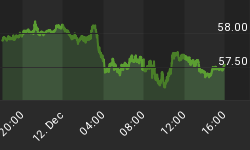UNEDITED
Throughout the first half of the year, the economic data has been ambiguous. Growth in the manufacturing sector has moderated from the rapid growth in 2004. Consumer spending showed signs of abating, but unseasonable weather has been cited as the primary reason. Over the past week, economic data indicates that economic growth has started to accelerate.
ISM manufacturing survey rose 2.4 points to 53.8. This was the first gain in six months and higher than economists expected, which was no change from May. Most of the increase was due to the jump in new orders. New orders increased 5.5 points to 57.2, the highest level this year. The prices paid component dropped 7.5 points to 50.5. While this was the lowest the prices paid component has been since February 2002, this was the 40th consecutive month that manufacturers reported that prices increased. After contracting in May, manufactures reported that employment held steady in June, rising 1.1 points to 49.9.
The June non-manufacturing survey was also better than economists expected. Instead of a 0.2 point gain, the index increased 3.7 points in June to 62.2. Six of the components rose. The employment component increased the most, jumping 4.0 points to 57.4. This was the highest since February and the second highest level since the survey started in 1997. While manufactures said that prices stabilized in June, non-manufacturers reported that prices accelerated in June. The prices paid component increased 2.0 points to 59.8. This was the first increase this year.
Factory orders jumped 2.9% in May due to a 21.1% jump in transportation orders. Excluding transportation, factory orders declined 0.1% from April. While factory orders excluding transportation dropped 0.1% from April, orders were up 7.2% compared to last year. Orders for consumer goods rose 10.5% from last year, which was the strongest growth since November 2004.
Vehicle sales reached 17.5 million units, which was better than the 17.0 million unit pace forecasted and the fastest selling pace this year. General Motors sales soared 47% after it extending its employee discount to everyone. This incentive eliminated the rebates that GM had been offering and set prices at a no-haggle low price. It is interesting that this increased that average incentive by less than $500. According to Autodata, the employee discount increased the average incentive by $449 to $4,458. This week, GM announced it will extend the employee-discount pricing until August 1 and Chrysler announced that will also sell vehicles at the employee price. This forced Ford to match the offer. XXannounced it will introduce its own employee discount plan and will increase its average incentive to $4,400.
Last week, the Federal Reserve raised rates by 25 basis points. More importantly it said monetary policy remains accommodative and further tightening will be measured. The statement also caused traders to reassess how many more times the Federal Reserve will increase rates this year. Before the meeting, Fed Funds futures were trading at 3.78% yield, meaning that traders expected the Federal Reserve to increase rates by another 50 basis points this year. Now, the December contract is trading at 3.895%, so now traders expects three 25 basis points hikes over the next four meetings this year.
Wal-Mart announced that its same store sales rose about 4.5% in June, slightly better than its plan of 2%-4%. Additionally, throughout June the retailer said that general merchandise was stronger than its food sales, which had been stronger in May. Last week, Target said that June same store sales were running above its plan of 4%-6% growth. Some analysts attribute the recent strength to the pent-up demand after poor weather hindered purchases of seasonal items. According to the International Council of Shopping Centers, retail sales increased 3.8% during the first week of July, from last year. It also expects sales to have increased by 4.5% in June. This would be the strongest year-over-year growth since February's 4.7% increase.
The uneven economic growth over the past six-months caused economists to forecasts a weakening economy. Similar to other "soft-patches" interest rates headed lower, which in turn ignited the already hot housing market. Recent economic reports have revealed that the economy has expanded at a faster pace than initially perceived. In the past, interest rates have moved higher on stronger economic news. While shorter-term bonds have increased, long-term interest rates remain close to two-year lows. If the employment number is stronger than the 198,000 gain economists expect, its likely that the bond market will start to price in a stronger economy.
















